CuriosiD: Why Is Detroit Sometimes Called “The Paris of the Midwest?”
Detroit’s French connection is more than 300 years old, but is the comparison a modern invention?
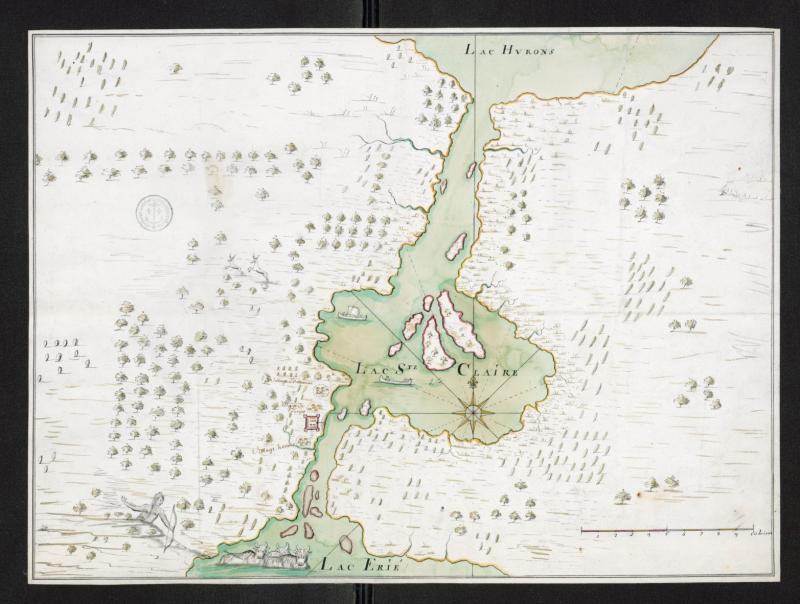
Ciara Linden has lived in and around Detroit for most of her life, and she’s always heard passing references to the city’s likeness to Paris. “From time to time I’ve heard it just in random places. Like I heard the streets are done in the same way as Paris or the same city engineer designed it,” Linden says. “I don’t even know exactly when this term started.”
“I’m wondering why Detroit is often referred to as “The Paris of the Midwest.””
Ciara Linden, Detroit
THE SHORT ANSWER
Detroit’s Parisian comparison dates back to the French colonial era after Fort Pontchartrain was established in 1701. The fort’s founder, Antoine Laumet dit de Lamothe Cadillac, predicted that the fort would one day be an international hub. He explained so in letters to his superior (and the fort’s namesake), Louis Phélypeaux, comte de Pontchartrain, in 1705:
“Ce poste “sera le Paris de la Nouvelle-France” et toutes les nations viendront s’y établir.”
“This post “will be the Paris of New France” and all nations will come to settle there.”
Notes on Antoine Laumet de Lamothe Cadillac, founder of Fort Pontchartrain
Though Detroit’s French population grew, the project for a larger New France ended in the French and Indian War, and Michigan’s territories ended up in the hands of the British in the lead up to the American Revolutionary War. Eventually, Detroit joined a growing fabric of cities in the United States, making the term ‘Midwest’ more apt than ‘New France.’
While the term ‘Paris of the Midwest’ initially owes itself to Detroit’s colonial heritage, it expanded to cover other comparisons like Detroit’s French architectural influence at the turn of the 20th century, Detroit’s rise in international prominence and the two cities’ use of broad, radial avenues.
BEFORE NEW FRANCE
Like all areas in North America, the areas surrounding Detroit were initially inhabited for millennia by mobile populations of indigenous peoples before any European presence was established. “It was traversed by a number of Algonquian and Iroquoian-speaking peoples,” says Catherine Cangany, a historian of colonial and early-federalist Detroit at the University of Notre Dame. “[They] didn’t use this area all the time, but seasonally for hunting.”
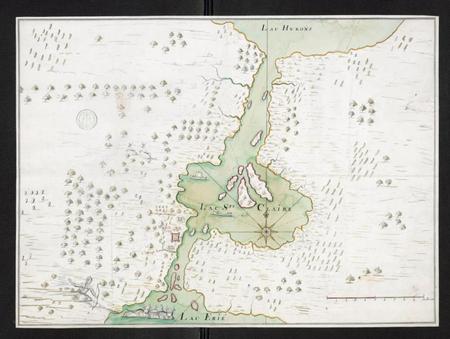
As colonial fur trade grew in the 17th century, alliances between national powers and Native American tribes formed. That put the Haudenosaunee Confederacy, a coalition of Iroquoian-speaking peoples, who were supported by English and Dutch colonial forces, at odds with French fur traders and their native allies.
As indigenous tribes fled violence by moving westward, the area around modern-day Detroit became mostly vacant by the turn of the 18th century, priming it for its eventual colonial settlement. The French and Haudenosaunee and another 30 some Indian Nations, allies of the French but previously enemies of the Haudenosaunee, identified then as Iroquois, agreed to armistice in 1701 in a peace treaty known as the Great Peace of Montreal. It was this treaty that eventually ushered the return of indigenous tribes, but not before French settlers came to explore new lands.
CADILLAC: “A MAN WHO INVENTED HIMSELF”
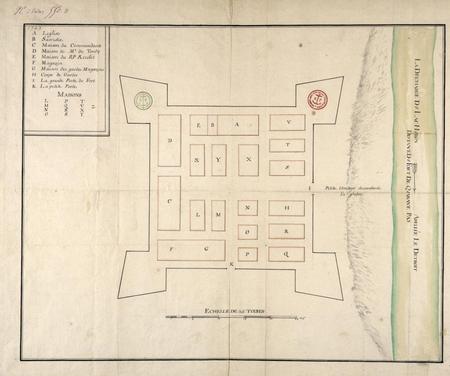
Antoine Laumet de Lamothe Cadillac led the first French garrison, 50 soldiers and about 50 hired men, to Detroit’s riverfront shortly after the peace treaty. France’s reasons for establishing a post in Detroit were economic and strategic: expand New France’s grasp of the North American fur trade and curb British colonial settlement in the Great Lakes. But for Cadillac, it was a new start. “He was a man who invented himself,” says Cangany.
As was the case with many North America settlers who left their homelands to begin life anew, a lot of what we know about Cadillac’s early life is cast in uncertainty, and much of what is known of his life in New France displays a willingness to deceive. His military credentials are dubious and his noble title of sieur de Cadillac was one he appointed to himself. (Elements of his family’s coat of arms, which itself is a replicate and invention, appear today as an ornament on Cadillac cars.)
“He’s an adventurer who sees a particular opportunity for himself and builds an image of himself to make that possibility come true.”
Catherine Cangany, historian of colonial and early-federalist Detroit at the University of Notre Dame
For his new life, Cadillac needed to ensure that Fort Pontchartrain would survive, but it wasn’t always easy. Cangany says the French post endured many hardships, including coming to blows with native allies and a destructive fire. “Even though Detroit burns to the ground in 1703, he’s still writing to his superiors back in France that his colony has a lot of potential.”
A summary of Cadillac’s letters to Pontchartrain was kept on record, and some have survived to this day. On October 25, 1705, the French noted the following from Cadillac’s messages: this post “will be the Paris of New France,” and all nations will come to establish themselves.
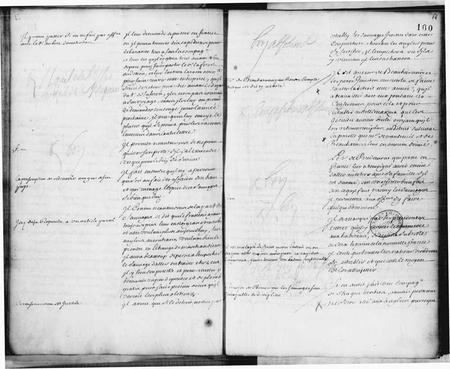
Given Cadillac’s history of bending the truth, it’s not hard to imagine that he probably used this phrase to ensure his superiors that the decision to maintain the fort was the right one. This is the most likely point where the association between Paris and Detroit entered the public consciousness. Cadillac would be ousted from the post in the following years, but Detroit went on to grow without him, moving hands from French control to British and eventually, to the United States of America.
While ‘New France’ isn’t quite the same as ‘Midwest,’ all that’s really changed is the frame of reference. A lot of French territory in North America became the Midwest in the United States, so it makes sense that the term changed with the times to reflect that.
A TALE OF TWO CITIES
While Cadillac was the first to associate Detroit with Paris and was possibly the first to contribute to the popularization of the comparison, Detroit has earned other comparisons to its French counterpart throughout its 300-year history.
For one, the city never fully lost its French roots. While Detroit’s French community would come to be Anglicized and assimilate with a wider American identity, its unique cultural community was recognized into the 1890s. The legacy can still be seen on Detroit street names like Beaubien, Chene, St. Aubin, Lafayette, or neighboring cities like Hamtramck and Pontiac.
In the late 1800s and into the early 1900s, Detroit was emerging into economic and cultural prosperity, itself becoming an internationally recognized like Paris. As the city boomed, developers introduced new building and homes in the style of Beaux Arts, French Gothic and Art Deco, architectural and art movements that originated in Paris.
Detroit’s French history is visible everywhere, but perhaps the first reason most consider the two cities’ likeness is in the design of some of its streets.
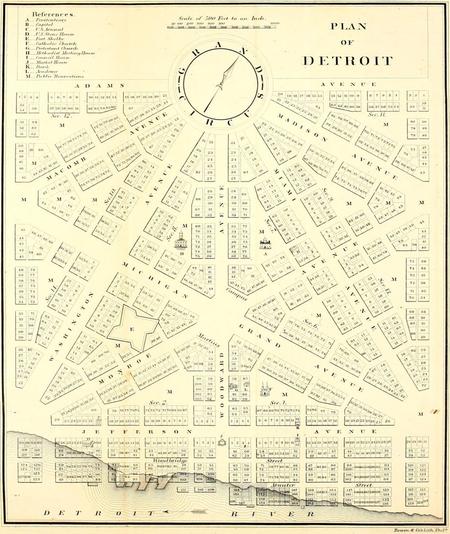
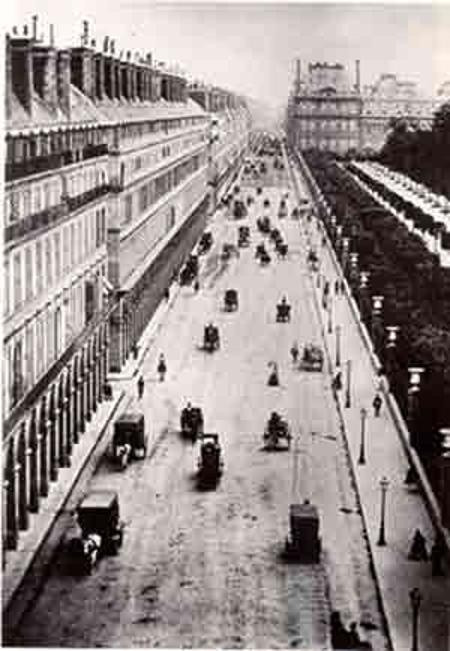
“Paris is categorized by broad avenues, these diagonal thoroughfares, and large public spaces,” says Paul Szewczyk who runs ‘Detroit Urbanism,’ a website which explores the city’s history of urban planning and development.
Whether it’s Woodward Avenue in Detroit or Champs-Élysées in Paris, there’s no denying that the cities both have famous roadways. But Detroit’s oldest urban plan, which laid the framework for Grand Circus Park and Campus Martius downtown after the fire of 1805, shared a likeness with no other cityscape at its time. And that’s thanks to its designer: Judge Augustus Woodward.
“Woodward was half a century ahead of Paris as far as understanding that you can’t just have a medieval style city with super narrow corridors, nobody has access to light or air,” says Szewczyk. “He was already thinking about the need for wide-open airy city with public spaces.” Though Detroit’s plan shares some characteristics with the newly minted American capital of Washington, D.C., Woodward’s layout was entirely unique: a series of rectangular lots on triangular blocks, designed to create a lattice of hexagonal superblocks with radial avenues. Of course, as the gridiron of mile roads indicates today, Woodward’s plan never saw through its full completion.
Indeed, Parisian styles became en vogue during the French capital’s renovation under Napoleon III, ushering in a wave of French artistic influence on Detroit, including the construction of Grand Boulevard. But Woodward’s plan for Detroit and its remaining artifacts downtown signaled the dawn of a new American city.
ETYMOLOGICAL DISCLAIMER
It’s important to note that Paris gets compared to a lot of cities, like ‘Chicago – Paris on the Prairie,’ or ‘Bucharest – The Little Paris of the East.’ It’s an internationally recognized city unique for its cultural, economic and societal influence on the world. While many places in the world get compared to the French capital, Detroit’s associations are both real and deserved.
ABOUT THE LISTENER

Ciara Linden lives in Detroit and is a lifetime Michigander. She works for GM.
ASK YOUR QUESTION
ABOUT DETROIT OR THE REGION
WDET’s CuriosiD is sponsored by the Michigan Science Center.

